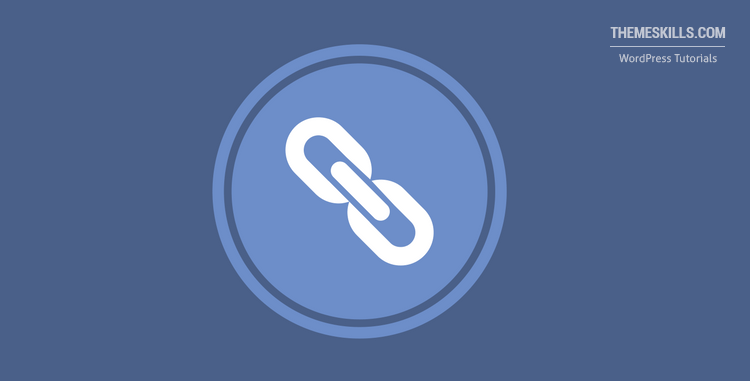Working on a WordPress website, you’ll find yourself wanting to change permalinks quite often, for different reasons.
The main reason would be that WordPress, by default, adds the titles as permalinks.
For example, when I save this post as a draft, my permalink will be set as:
/how-to-change-permalinks-for-wordpress-pages-posts-categories-tags/
But I don’t like that, because:
- It’s too long. Short and focused URLs are better for both SEO and users;
- It has some stop words that don’t add any value (to, for, and even how), and which are usually ignored by Google.
Note that there are cases when it’s best to not remove the stop words because you might end up with something weird that can be in contradiction with your topic. For example, removing the stop words from /dont-start-a-fire-in-your-bedroom/ results in /start-fire-bedroom/.
I usually like to implement the best SEO and user experience practices, whenever possible. Therefore, I’ll edit and change my post’s permalink, like I always do.
Let’s see how.
How to change permalinks for WordPress pages and posts
Here’s a video tutorial, if you don’t want to read.
Method 1
When you’re in a WordPress post’s editing area, under the title field, the Permalink will be displayed.
Note that, if you’re starting a new post, the permalink won’t appear until you save or publish the post.
In order to change the permalink, you need to:
1. Click the Edit button that’s right next to it.

2. Change it however you wish and press the OK button.

3. Press the Save Draft or Update button.
For this example, I’ve removed the stop words, and the post’s permalink looks like this now:

I believe it looks much better, and you can still understand what’s the post about.
Method 2
By using this method, you won’t have to be inside the post’s editing area in order to change the permalink.
All you have to do is to:
1. Go to Posts -> All Posts.
2. Hover your mouse cursor over a post and press the Quick Edit link.

3. Change the Slug, which is basically the permalink.

4. Press the Update button.
Now, let’s see how to change the permalinks for your WordPress categories and tags.
How to change permalinks for WordPress categories and tags
Unlike posts and pages, when creating categories and tags, WordPress lets you add whatever permalinks you want, right from the start. If you don’t add any, then it will add their names as permalinks.
Once again, there are two methods, similar to the ones above.
Here’s a video tutorial, if you don’t want to read.
Method 1
1. Go to Posts -> Categories and click on the category that you want.
2. Change the Slug.

3. Press the Update button.
Method 2
Just like in the post example, we’ll use the Quick Edit feature.
1. Go to Posts -> Categories.
2. Hover your mouse over the category and click the Quick Edit link.

3. Change the Slug.

4. Press the Update Category button.
Not that hard, right?
Redirect permalinks after changing them
If a post, page, and so on, has been published – especially if it has been published for a while – and you change its permalink, I strongly recommend creating a 301 redirect from the old URL to the new one.
Why? For several reasons. Let’s see a couple of them.
1. Let’s say that you or someone else shared one of your posts on Facebook.
If you later change its permalink, then the users who will click on your post on Facebook will encounter a 404 Page Not Found error, instead of your actual post, which is not good, right? Because you’ll lose readers.
Think of permalinks as home addresses. If you change your home address and don’t tell anyone, then no one will find you.
2. Let’s say someone links to one of your posts on their blog.
If you later change that post’s permalink, besides “greeting” the visitors from that blog with a 404 Page Not found error, you’ll also lose a valuable backlink that could have helped with your rankings on search engines.
If a redirection is in place, then the “link juice” would be passed on to the new permalink, and the backlink will still have value.
So, it’s always a very good idea to perform a redirect when changing permalinks.
That’s a wrap
Hope you liked the post and found it comprehensive.
Don’t forget to share it to help out others!
You can also follow us on Twitter and subscribe to our YouTube channel.
If you want to start your own WordPress blog, or need a website for your business, our WordPress installation service is at your disposal!


Didnt work at all. Jsut need to change permalinks for a page You said it is in the pages section bit there is no pages section
If you mean that you don’t have a Pages section, then you have a problem there. Perhaps, a plugin conflict. A Pages section comes, by default, with every WordPress installation.
If you mean that I didn’t mention Pages, that’s because the process for the posts applies to pages as well, and I mentioned that in the tutorial:
By “Pages section”, I mean the Pages section in your Dashboard.
Terrible because it only describes how to change it on POSTS not PAGES as mentioned a ton of times. Waste of time!
It was stated at the very beginning of the “How to change permalinks for WordPress pages and posts” part that:
This means that if you want to change the permalink for a page, you just need to go to Pages, instead of Posts, in your WordPress Dashboard. The rest of the process is exactly the same.
This was also mentioned in another comment, right above yours.
So, the waste of time could have easily been avoided with some careful reading.
Nonetheless, I’ve updated the text and put the notification in an alert box.
hi
how can i add some specific format like .php or .html for the end of pages urls ( not posts )
Hello! Unless there’s a plugin for that, which I doubt, you’ll have to add some custom code in the .htaccess or nginx.conf file – depends on your server’s setup. I recommend looking for professional help with that because even the smallest mistake can break your site.